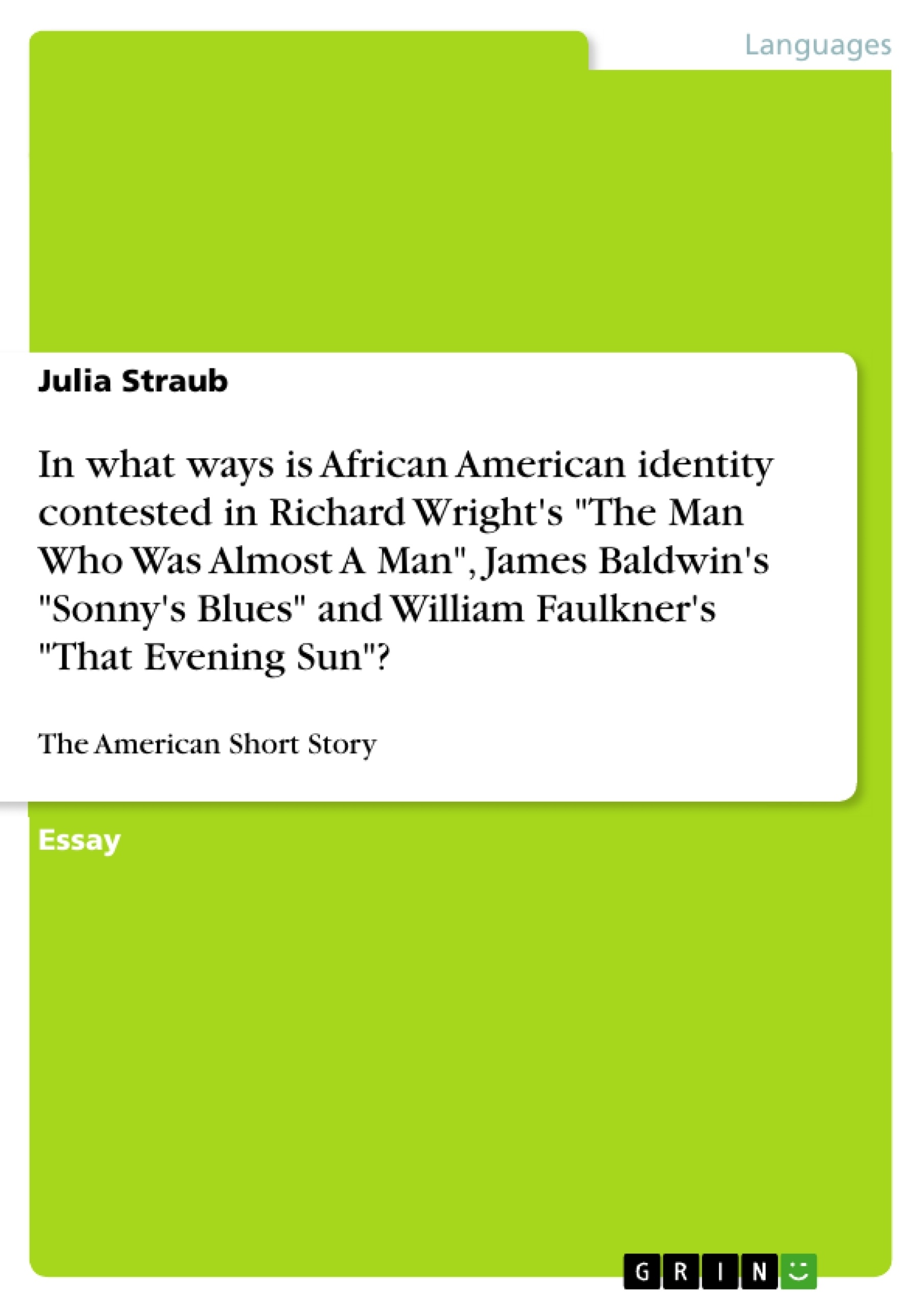This essay will aim at answering the following questions and it will compare the different representations of African American identity in the three short stories. Is there a difference in the representation of black identity if it is contested by a white writer? The question is if Faulkner’s representation of African American identity as a white author is more influenced by stereotypes than Wright’s or Baldwin’s. Or might some of these stereotypes actually be part of the black identity?
For almost two centuries the short story has been part of the American literary tradition. It is one of the most essential literary genres of American culture. But it has been just as important to African American culture. Richard Wright and James Baldwin are two of the most well-known African American short story authors. They represent African American identity and culture in their short stories from the black point of view. William Faulkner, whose story will be analysed in this essay together with the ones of Wright and Baldwin, represents African American identity from a white author’s point of view. This essay will look at a variety of ways in which African American identity is contested in three short stories by these three authors. The stories the essay will deal with are Wright’s story The Man Who Was Almost a Man, written in 1961, Baldwin’s Sonny’s Blues from 1957 and William Faulkner’s That Evening Sun which was published for the first time in 1931, but also appeared in 1950 which is the version this essay relies on. Black writers have often been "neglected or misread because of their ‘race’", as Byerman argues, therefore it is interesting to take a look at the ways black identity is represented and contested in those stories.
Inhaltsverzeichnis (Table of Contents)
- In what ways is African American identity contested in the stories?
- Introduction
- African American identity in general
- The Man Who Was Almost a Man by Richard Wright
- Wright's experience and African American identity
- The setting and characters
- The gun as a symbol for manhood
- The influence of the environment on Dave's identity
- Sonny's Blues by James Baldwin
- Baldwin's style of writing
- The setting and the main themes
- The influence of the environment on Sonny's identity
- That Evening Sun by William Faulkner
- Faulkner's experience and his perspective on African American identity
- The influence of stereotypes on Faulkner's depiction of African American identity
- Conclusion
Zielsetzung und Themenschwerpunkte (Objectives and Key Themes)
This essay aims to explore the complexities of African American identity as contested in three short stories: The Man Who Was Almost a Man by Richard Wright, Sonny's Blues by James Baldwin, and That Evening Sun by William Faulkner. The essay will examine the different perspectives on African American identity offered by these authors, including the influence of their personal experiences, the societal context of their narratives, and the potential impact of stereotypes on their representations.
- African American identity in the context of historical and societal factors
- The influence of environment and upbringing on identity formation
- The role of stereotypes in shaping perceptions of African American identity
- The complexities of race, racism, and oppression in shaping African American experiences
- The interplay of individual agency and societal constraints in the pursuit of identity
Zusammenfassung der Kapitel (Chapter Summaries)
The essay begins by examining the concept of African American identity in general, considering the cultural, historical, and environmental factors that influence it. It then dives into an analysis of The Man Who Was Almost a Man, focusing on the protagonist Dave's struggle for respect and recognition in a racially charged rural environment. The essay explores how Dave's desire for manhood is intertwined with societal expectations and the racial dynamics of his time.
Next, the essay shifts to Sonny's Blues, highlighting the narrative's exploration of African American identity in an urban setting. It analyzes how the story delves into the themes of music, drug abuse, and the complex relationship between brothers navigating a challenging social environment. The essay explores how Sonny's musical talent serves as a source of both solace and escape from the realities of his existence.
Finally, the essay delves into That Evening Sun, focusing on Faulkner's depiction of African American identity from a white author's perspective. It examines how Faulkner's narrative might be influenced by stereotypes prevalent in his time and explores the potential for his representation to perpetuate or challenge established perceptions of African American identity.
Schlüsselwörter (Keywords)
This essay explores the complexities of African American identity, drawing on key terms and concepts such as race, racism, oppression, environment, stereotypes, cultural influence, societal expectations, individual agency, and the impact of historical and social contexts on identity formation. It examines these concepts through the lens of three short stories by Richard Wright, James Baldwin, and William Faulkner.
- Quote paper
- Julia Straub (Author), 2018, In what ways is African American identity contested in Richard Wright's "The Man Who Was Almost A Man", James Baldwin's "Sonny's Blues" and William Faulkner's "That Evening Sun"?, Munich, GRIN Verlag, https://www.grin.com/document/464333



